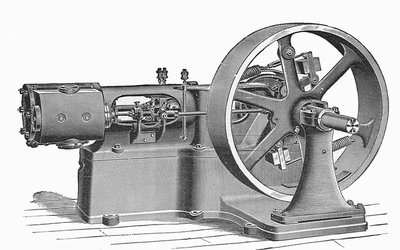

Then the cylinder was cooled by a spray of water, which caused the steam to condense, forming a partial vacuum in the cylinder. At the end of the power stroke, the weight of the object being moved by the engine pulled the piston to the top of the cylinder as steam was introduced. The first steam engines, introduced by Thomas Newcomen in 1712, were of the "atmospheric" design. The Watt steam engine design became synonymous with steam engines, and it was many years before significantly new designs began to replace the basic Watt design. Steam engines of this kind propelled the Industrial Revolution in Great Britain and the world. Napier & Son (London) in 1832, now in the lobby of the Superior Technical School of Industrial Engineers of the UPM ( Madrid). " James Watt: Musical Instrument Maker." The Galpin Society Journal 55, 2002.Industrial Revolution era stream engine designĪ late version of a Watt double-acting steam engine, built by D. " James Watt: Making the World Anew." London: Science Museum, 2014. " The Chemical Work of James Watt, F.R.S." Notes and Records of the Royal Society of London, 1985.

In the left background is his father's assistant with a client in the carpenter's shop. James Watt (1736-1819) Scottish engineer, as a boy experimenting with the tea-kettle at the dining table of his childhood home at Greenock. 'Watt's First Experiment', 18th century, (c1870). He also served periodically as Greenock’s chief magistrate and treasurer. was a prominent citizen of Greenock and a successful carpenter and shipwright who outfitted ships and repaired their compasses and other navigational devices. James Jr.'s grandfather, Thomas Watt, was a well-known mathematician and local schoolmaster. Greenock was a fishing village that became a busy town with a fleet of steamships during Watt's lifetime. James Watt was born on January 19, 1736, in Greenock, Scotland, as eldest of the five surviving children of James Watt and Agnes Muirhead. Notable Quote: “I can think of nothing else than this machine.”.Children: James Jr., Margaret, Gregory, Janet.Spouses: Margaret (Peggy) Miller, Ann MacGregor.Patents: GB176900913A “A New Invented Method of Lessening the Consumption of Steam and Fuel in Fire Engines”.Died: Augin Handsworth, Birmingham, England, United Kingdom.Born: Januin Greenock, Renfrewshire, Scotland, United Kingdom.

Known For: Invention of the improved steam engine.


 0 kommentar(er)
0 kommentar(er)
